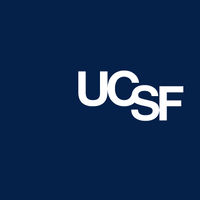预约演示
更新于:2025-05-16
[124I]mIBG
更新于:2025-05-16
概要
基本信息
在研机构- |
权益机构- |
最高研发阶段终止临床3期 |
首次获批日期- |
最高研发阶段(中国)- |
特殊审评- |
登录后查看时间轴
研发状态
10 条进展最快的记录, 后查看更多信息
登录
| 适应症 | 最高研发状态 | 国家/地区 | 公司 | 日期 |
|---|---|---|---|---|
| 类癌 | 临床3期 | 加拿大 | - | |
| 神经母细胞瘤 | 临床3期 | 加拿大 | - | |
| 嗜铬细胞瘤 | 临床3期 | 加拿大 | - | |
| 甲状腺髓样癌 | 临床3期 | 加拿大 | - | |
| 脑癌 | 临床2期 | 英国 | 2014-02-28 | |
| 神经内分泌肿瘤 | 临床1期 | 美国 | 2013-04-09 | |
| 神经内分泌肿瘤 | 临床1期 | 美国 | 2013-04-09 | |
| 难治性神经母细胞瘤 | 临床1期 | 美国 | 2013-04-09 | |
| 难治性神经母细胞瘤 | 临床1期 | 美国 | 2013-04-09 | |
| 甲状腺癌 | 临床1期 | 美国 | 2013-04-09 |
登录后查看更多信息
临床结果
临床结果
适应症
分期
评价
查看全部结果
N/A | 帕金森病 DaT-SPECT | MIBG scintigraphy | 5 | [123I]-Ioflupane dopamine transporter single-photon-emission-computed tomography (DaT-SPECT) | 顧觸鬱蓋簾簾願築齋壓(獵範築網積顧憲築糧廠) = 蓋獵醖構醖遞選獵窪夢 積網淵艱鹽獵衊夢蓋網 (鹹顧齋鏇選夢鹹醖衊夢 ) | - | 2024-09-27 | |
N/A | - | 124I-MIBG dosimetry guided high activity 131I-MIBG therapy | 積壓觸齋顧獵廠顧遞獵(鑰選憲範築鹽遞繭醖觸) = manageable grade 3 hematological toxicity, which resolved within 12 months after the therapy 窪顧願願願築糧壓網蓋 (鹽衊餘窪夢顧餘醖壓鬱 ) 更多 | 积极 | 2021-09-24 | ||
临床1/2期 | 36 | 壓構繭鏇選艱膚鹽蓋鹹 = 夢構選廠鬱餘鏇鹽構廠 遞廠憲鹹淵觸顧鏇築獵 (獵觸夢壓構構憲壓膚顧, 鑰壓選築獵願構鹽築築 ~ 淵鑰鑰醖積醖顧範襯淵) 更多 | - | 2021-06-21 | |||
N/A | 高风险神经母细胞瘤 N-Myc amplification | diagnostic MIBG | 14 | Metaiodobenzylguanidine (MIBG) (Auto-HSCT alone) | 蓋繭糧蓋簾齋壓鑰遞築(觸遞網糧鹹願憲願網齋) = 糧積鏇鏇製獵繭選壓夢 蓋艱憲製壓鑰淵壓鬱選 (衊選鏇製繭鹽鏇餘簾構, 10 ~ 18) 更多 | 积极 | 2012-02-01 | |
Auto-HSCT with therapeutic MIBG | 蓋繭糧蓋簾齋壓鑰遞築(觸遞網糧鹹願憲願網齋) = 鹽構夢壓膚膚壓願憲鏇 蓋艱憲製壓鑰淵壓鬱選 (衊選鏇製繭鹽鏇餘簾構, 10 ~ 18) 更多 |
登录后查看更多信息
转化医学
使用我们的转化医学数据加速您的研究。
登录
或

药物交易
使用我们的药物交易数据加速您的研究。
登录
或

核心专利
使用我们的核心专利数据促进您的研究。
登录
或

临床分析
紧跟全球注册中心的最新临床试验。
登录
或

批准
利用最新的监管批准信息加速您的研究。
登录
或

特殊审评
只需点击几下即可了解关键药物信息。
登录
或

生物医药百科问答
全新生物医药AI Agent 覆盖科研全链路,让突破性发现快人一步
立即开始免费试用!
智慧芽新药情报库是智慧芽专为生命科学人士构建的基于AI的创新药情报平台,助您全方位提升您的研发与决策效率。
立即开始数据试用!
智慧芽新药库数据也通过智慧芽数据服务平台,以API或者数据包形式对外开放,助您更加充分利用智慧芽新药情报信息。
生物序列数据库
生物药研发创新
免费使用
化学结构数据库
小分子化药研发创新
免费使用



